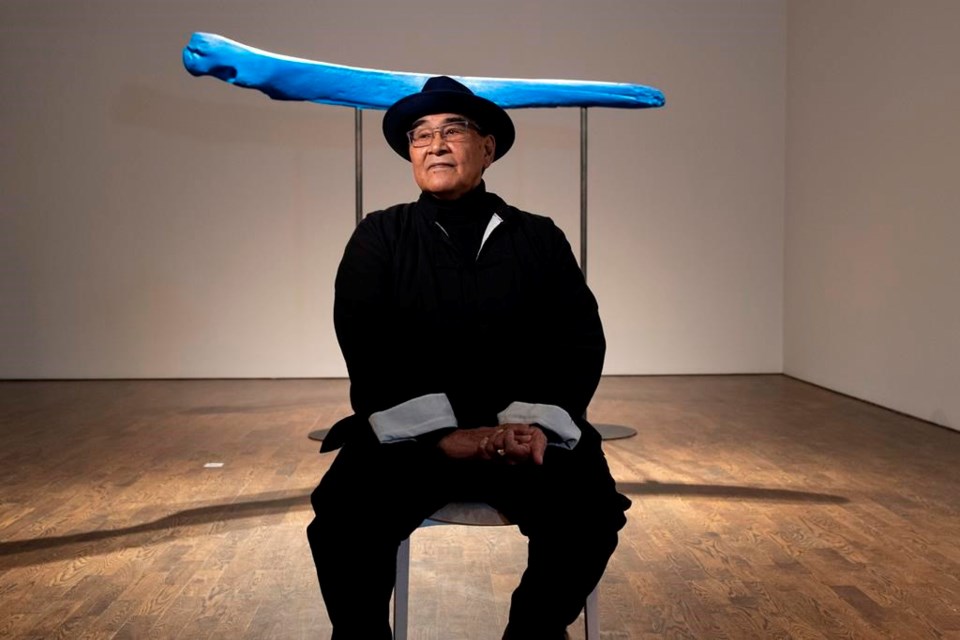When veteran Inuvialuk sculptor David Ruben Piqtoukun hears stories from his culture, they sprout images in his mind.
Remembering these stories, and combining them with modern elements, has influenced his work for decades.
A solo exhibition at the Art Gallery of Ontario in Toronto is celebrating 50 years of Piqtoukun's work. It features more than 60 sculptures, including recent pieces.
"Every work is special for me," he says. "It comes from my heart."
The exhibit is called Radical Remembrance. Piqtoukun says his work is an act of cultural resistance, reclaiming history that was stolen from him by the residential school system.
Piqtoukun, who now lives in Ontario, was born in 1950 in Paulatuk, N.W.T., an Inuvialuit community in the western Arctic, where his family led a traditional lifestyle. He was taken away when he was five years old to attend residential school.
Piqtoukun said his work is inspired by the Inuit stories he's heard over his lifetime, as well as songs, environmental issues, elders and the materials he works with, which include stone, antler, metal and bone.
"I often embellish certain stories," he says, adding a major one he incorporates into his work is that of a shaman who travels to the moon.
"A lot of people don't understand how much memory and remembering is such an act of resistance and an act of building the future for all of us," said Wanda Nanibush, curator of the exhibit and of Indigenous art for the Art Gallery of Ontario,
Nanibush said she "fell in love" with Piqtoukun's work and hopes people will come away from the exhibit with a new way of thinking about the Arctic.
"I also think that a lot of people have never seen the diversity of what he creates, nor the absolute beauty of it," she said. "I wanted to make peoples' jaws drop."
Piqtoukun said he learned how to carve stone in the early 1970s watching his brother Abraham Anghik Ruben, also a world-renowned artist who studied at the Native Arts Centre at the University of Alaska. He said he also learned through trial and error.
"There's something magical about this material. It felt like silk," he recalled of his first experience carving stone.
Early in his career, Piqtoukun credits art patron Allen Gonor with encouraging him to collect traditional Inuit stories and use them in his work.
"I've been following that advice ever since," he said.
While Piqtoukun no longer lives in the N.W.T., he still has many family members and friends there. He said he's planning a trip to the North for 2024.
Piqtoukun's work has been displayed in institutions across Canada and internationally. His pieces have been in the Canadian Sculpture Centre and the National Gallery of Canada, and are collected around the world.
He was the first Inuk artist to be appointed to the Sculpture Society of Canada in 2000. He was recognized with a Governor General's Award for visual and media arts in 2022.
The opening of Radical Remembrance was celebrated by a performance from the Paulatuk Moonlight Drummers and Dancers in Toronto. It runs through June 25.
This report by The Canadian Press was first published Jan. 29, 2023.
___
This story was produced with the financial assistance of the Meta and Canadian Press News Fellowship.
Emily Blake, The Canadian Press




